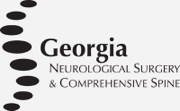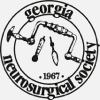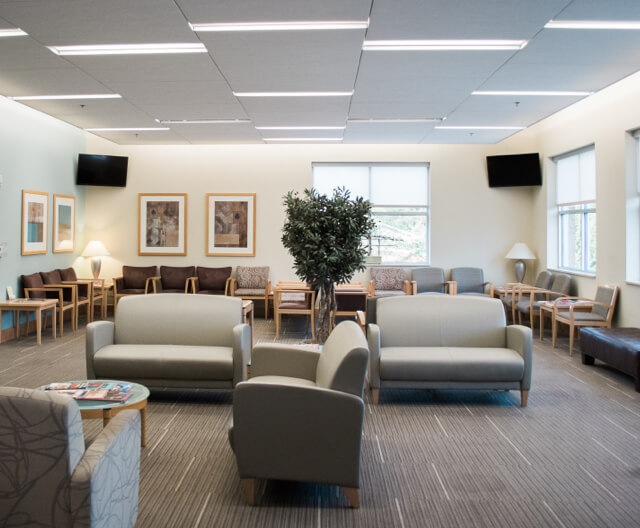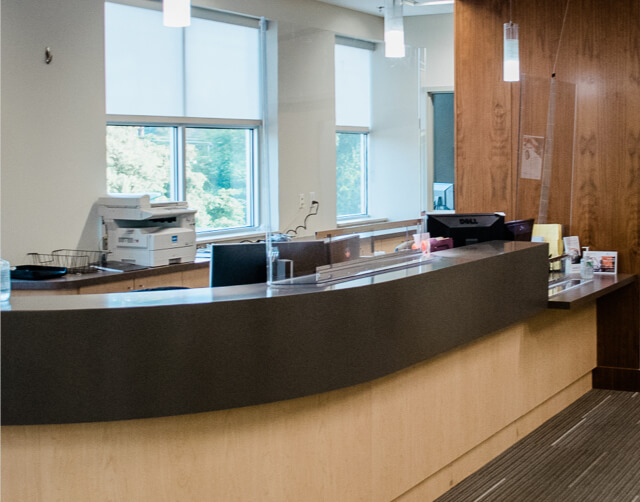




Dr. Woodall’s Exceptional Background
After graduating cum laude from the University of Georgia Honors Program, he went on to earn his MD from Mercer University School of Medicine where he was elected into the AOA medical honor society as a third-year student, an honor usually reserved for the top 1 or 2 students in a medical school class. After medical school, he completed a 7-year neurological surgery residency training program at the Medical College of Georgia, where he specialized in endovascular techniques. Dr. Woodall also trained in cerebrovascular and skull base surgery under world-renowned neurosurgeon Dr. Robert Spetzler.
Dr. Woodall has privileges to practice neurosurgery at St Mary’s Hospital, Piedmont Athens Regional Hospital, and the GNS Surgery Center, and serves as the Medical Director of Neurosciences at St Mary’s Hospital and as Associate Clinical Professor of Neurosurgery at the AU/UGA medical partnership. In addition, Dr. Woodall has many scholarly publications to his credit and has had his research presented at many national and international conferences.

Not only does Dr. Woodall have specialized training in endovascular neurosurgery; he is the only neurosurgeon nearby with skull base and cerebrovascular fellowship training. He has experience in performing complex neurosurgeries, including endoscopic endonasal surgery, intraventricular neuroendoscopy, and minimally invasive and robotic spine surgery.
Dr. Woodall is dedicated to treating each of his patients with respect and empathy. He also wants to keep you informed about the fundamentals of your treatment to ease your fears and give you the knowledge you need to feel empowered and secure.

A cerebrovascular bypass is used to improve blood flow (revascularize) the brain. The most common type of cerebrovascular bypass, called STA-MCA bypass (superficial temporal artery to middle cerebral artery bypass), is similar to coronary bypass in that it reroutes blood flow to avoid the area of blockage. The difference, of course, is that STA-MCA bypass takes place in the brain rather than the heart. A bypass technique may also sometimes be used in the treatment of a complex brain aneurysm in case flow needs to be re-routed in order to treat the aneurysm.
This procedure, an alternative treatment for hydrocephalus (a buildup of excess fluid in the brain), is often able to replace implanted shunts that have been traditionally used for this purpose. Though shunts may remain necessary in many cases, whenever possible, intraventricular neuroendoscopy is preferable, since it does not risk the occlusion or infection that can accompany the shunt placement. Intraventricular neuroendoscopy can also be effective for taking biopsies of or removing tumors in the fluid spaces of the brain or ridding the body of a spontaneous brain hemorrhage.


Surprisingly, the majority of benign tumors on the pituitary gland (a gland located below the central part of the brain) can be removed through the nose so that brain tissue remains undisturbed. Dr. Woodall can view the surgical site through an endoscope (a long thin camera inserted into the nasal passages), and therefore can completely remove the tumor without a skin incision. For patients with pituitary lesions, interdisciplinary treatment is critical. He works collaboratively with an otolaryngologist (ENT doctor), an endocrinologist, and an ophthalmologist in pituitary cases.
Skull base surgery is a subspecialty of neurosurgery developed to treat deep, hard-to-reach lesions in the brain. Skull base surgery removes bone to prevent brain retraction and potential brain damage. Skull base surgical techniques permit safer access for neurosurgeons dealing with complex brain tumors, acoustic neuromas, meningioma, trigeminal neuralgia, and repair of defects of the skull base.
Minimally Invasive &
Robotic Spine Surgery
Dr. Woodall is well-trained in both minimally invasive and open techniques to approach problems with the cervical, thoracic, and lumbar spine. So, whichever procedure you require, you can be sure he will customize his approach to meet your particular needs. Minimally invasive approaches, though not always appropriate, have several advantages, including that they minimize potential harm to healthy tissue, reduce blood loss, accelerate recovery, and can be performed on an outpatient basis.
Conditions routinely treated with minimally invasive and robotic spine surgery include:
- Degenerative disc disease
- Cervical myelopathy
- Cervical radiculopathy
- Thoracic myelopathy
- Lumbar stenosis
- Lumbar radiculopathy
- Lumbar spondylolisthesis

Microvascular Decompression
When cranial nerves are compressed at the brainstem, the following problems may occur: trigeminal neuralgia, hemifacial spasm, or glossopharyngeal neuralgia. While some patients with these conditions respond well to nonsurgical treatment, if this is not true in your case, you may be a candidate for microvascular decompression (MVD). The procedure begins with a small incision behind the ear, followed by creating an opening in the bone (roughly the size of a silver dollar).
That opening provides Dr. Woodall with access to the brain and contents of the skull. Once the affected artery is identified, it will be dissected away from the impacted nerve and padded with a small piece of Teflon (known as a pledget). The pledget will protect the nerve from the pulsations of the offending blood vessel. This process has a history of success with a low risk of complications. For some patients, single session stereotactic radiosurgery (SRS) may represent a reasonable treatment alternative for patients with trigeminal neuralgia. Dr. Woodall is pleased to offer SRS as well for appropriately selected patients.
Endovascular Neurosurgery
Endovascular neurosurgery represents a less invasive approach to treat vascular disorders of the brain and spinal cord than does open surgery. It may be a treatment for
- Brain aneurysm or acute stroke (clot in a large blood vessel of the brain)
- Vascular malformations, eg. arteriovenous malformations (AVMs)
- Arteriovenous fistula (AV fistula)
- Vertebral artery and intracranial atherosclerosis (vertebrobasilar insufficiency)
- Skull base tumors, such as meningioma (as an adjunct to surgical treatment)
- Spinal Tumors (as an adjunct to surgical treatment)
- Subdural Hematoma (in select cases)
- Pseudotumor Cerebri (idiopathic intracranial hypertension)
Contact Woodall Brain & Spine
for Superior Surgical Options
Because of Dr. Woodall’s extensive knowledge of all types of brain and spine neurosurgery, he can make the very best decision for treating your particular problem. By basing his approach on several factors, including your age, medical history, underlying conditions, anatomical features, and the nature of the disease itself, Dr. Woodall will provide personalized treatment that will fit your needs. You can trust Dr. Woodall to care for you as if you were a member of his own family. Contact our office today to get started.

Monday - Thursday | 8 a.m. - 4:30 p.m. Friday | 8 a.m. - 12:30 p.m.
Athens, GA 30606
